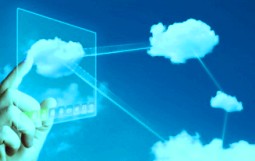The Personal Cloud

A new report from Gartner,"The New PC Era: The Personal Cloud,"predicts that in the next two years users will store more of their data in the cloud than on their personal computers.
While this means that those users will have greater device flexibility and probably be more productive, schools and businesses will have to rethink their delivery of applications and services.
Gartner identifies five "megatrends" to the personal cloud (as opposed to the services we already use in the cloud for work and school): consumerization, virtualization, app-ification, the self-service cloud, and the mobility shift.
I agree with Gartner's idea that the tendency that past decade has been for new technology to emerge first in the consumer market rather than the enterprise market. Why? Increasing user tech literacy, better mobile devices, the ubiquity of Internet access, social media, and, to a degree, the "democratization" of technology. (Though the shift to smarter and more expensive mobile devices and service plans also means the possibility of more limited access to this technology.)
My own community college campus is just moving to virtualization this academic year. Not everyone on campus is happy with having a "dumber" terminal on their desk that stores things in the cloud. They don't like giving up control, but the advantages are clear if done correctly.
I have spent a lot of time this past year thinking, writing and presenting on the "app-ification" trend in the way applications are being designed, delivered, and consumed by users. Apps have users continually accessing server/cloud-resident applications on their phones, tablets and pads - and increasingly on their more traditional laptops. Unlike the computer in my office that is getting dumber, my smartphone is getting smarter. Add to that better user interfaces, touch and gesture-based controls, speech recognition, location and contextual awareness and my phone IS my computer.
When I travel this week to a conference, my only device will be my iPhone. I will miss the bigger features of my laptopn, but I don't miss bringing it along. I have never been a fan of having to pay for the Net in a hotel that just got hundreds of dollars from me, when I can get it free in a place where I make a $3 coffee purchase. My phone will jump on the free wi-fi or get me what I need through my data plan.
Like many users, my first taste of any personal cloud was using Google Documents. I used it to store my own documents, share them with co-workers and access them at different locations and on different computers. It almost eliminated my use of flashdrives.
The story is that Dropbox was initially written co-founder Drew Houston forgot his USB key on a bus ride. Students with a valid school email address get 500MB for each person they invite to Dropbox, so I recommend using it to my students.
This mobility shift because of the increased use of smartphones and tablets needed the cloud to allow these devices to do tasks that we associate with "computers." Of course, what we think of as a computer or even as technology is also changing.
Are we in the post-PC era? Not yet. But personal computing is certainly changing and it will continue to impact how we work and learn.
Comments
No comments